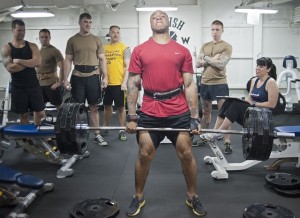- Calls to this hotline are currently being directed to Within Health or Eating Disorder Solutions
- Representatives are standing by 24/7 to help answer your questions
- All calls are confidential and HIPAA compliant
- There is no obligation or cost to call
- Eating Disorder Hope does not receive any commissions or fees dependent upon which provider you select
- Additional treatment providers are located on our directory or samhsa.gov
Bigorexia and Body Dysmorphic Disorder

Contributor: Courtney Howard, BA, writer for Eating Disorder Hope
Muscle dysmorphia, often referred to as bigorexia, is characterized by an individual’s obsession over his or her body being too small or underdeveloped and the subsequent drastic measures taken to increase muscle mass. This affects both men and women, though men are more likely to struggle with bigorexia. Muscle dysmorphia is a subset of body dysmorphic disorder (BDD), which is closely linked to other eating disorders.
How Does It Develop?
Just as dieting behaviors can snowball into an eating disorder, an obsession with the gym and weight-lifting can lead to bigorexia when combined with low self-esteem, a distorted self-image, and/or other underlying mental health conditions. The Alliance for Eating Disorders Awareness reports that as many as 10 percent of males who are “obsessive gym-goers” struggle with muscle dysmorphia.
As a 2005 scholarly article [1] on the emergence of bigorexia explains, “Pressure on males to appear more muscular and lean has prompted a trend in the area of psychobehavioral disorders often likened to anorexia and bulimia nervosa. Athletes are particularly susceptible to developing body image disorders because of the pressures surrounding sport performance and societal trends promoting muscularity and leanness.”
Bigorexia is closely linked to obsessive-compulsive disorder (OCD), as an individual’s obsession with weight-lifting and whey protein shakes can fuel disordered thoughts and increase behaviors. As with any eating disorder, this becomes a vicious cycle.
What Are the Warning Signs?
Not everyone who loves working out or lifts weights regularly struggles with bigorexia. How can you tell the difference between healthy exercise patterns and disordered behaviors?

Other warning signs can include never being satisfied with current muscle mass, consuming an excessive amount of supplements and muscle-building products, steroid and/or substance abuse, compulsively comparing body and muscle size to that of others, and obsession over other body parts and self-perceived flaws.
Why More Research is Needed
Bigorexia is under-researched and under-diagnosed. Many people still believe that men cannot struggle with eating disorders or body image issues, which is simply untrue. Women can also have muscle dysmorphia, and the disorder often co-occurs with depression and other mental health conditions.

For an individual’s obsession with weight-lifting and muscle mass to be diagnosed as bigorexia, it needs to cause a great deal of distress and affect his or her daily life. Those struggling with the muscle dysmorphia deserve increased public awareness on the condition and resources to support their recovery.
Community Discussion – Share your thoughts here!
Have you or your loved one struggled with Bigorexia, what types of treatment did were helpful in the road to recovery?

References:
[1]: Leone, J. E., Sedory, E. J., & Gray, K. A. (2005). Recognition and Treatment of Muscle Dysmorphia and Related Body Image Disorders. Journal of Athletic Training, 40(4), 352–359.The opinions and views of our guest contributors are shared to provide a broad perspective of eating disorders. These are not necessarily the views of Eating Disorder Hope, but an effort to offer discussion of various issues by different concerned individuals.
We at Eating Disorder Hope understand that eating disorders result from a combination of environmental and genetic factors. If you or a loved one are suffering from an eating disorder, please know that there is hope for you, and seek immediate professional help.
Last Updated & Reviewed By: Jacquelyn Ekern, MS, LPC on February 15, 2016
Published on EatingDisorderHope.com
